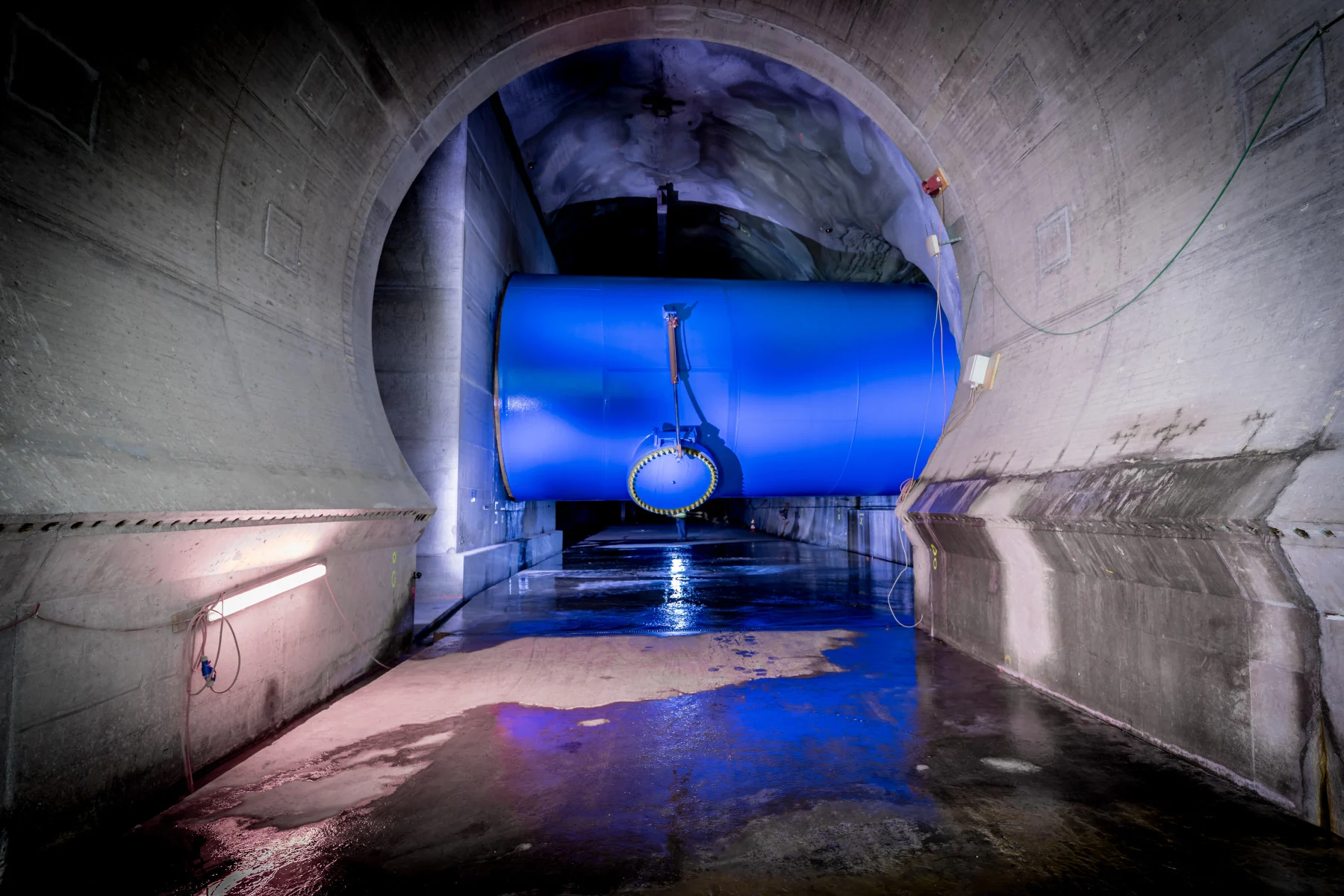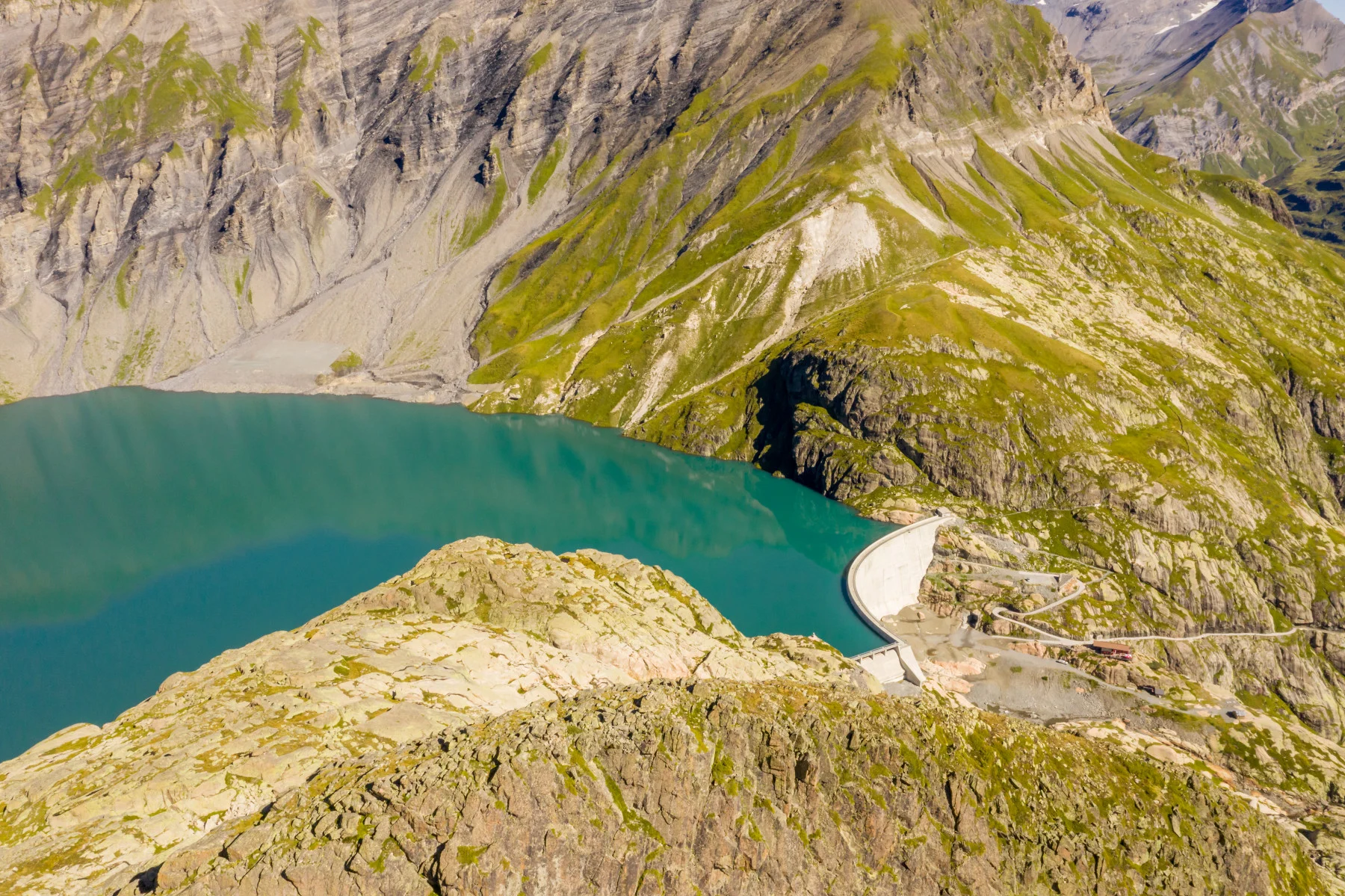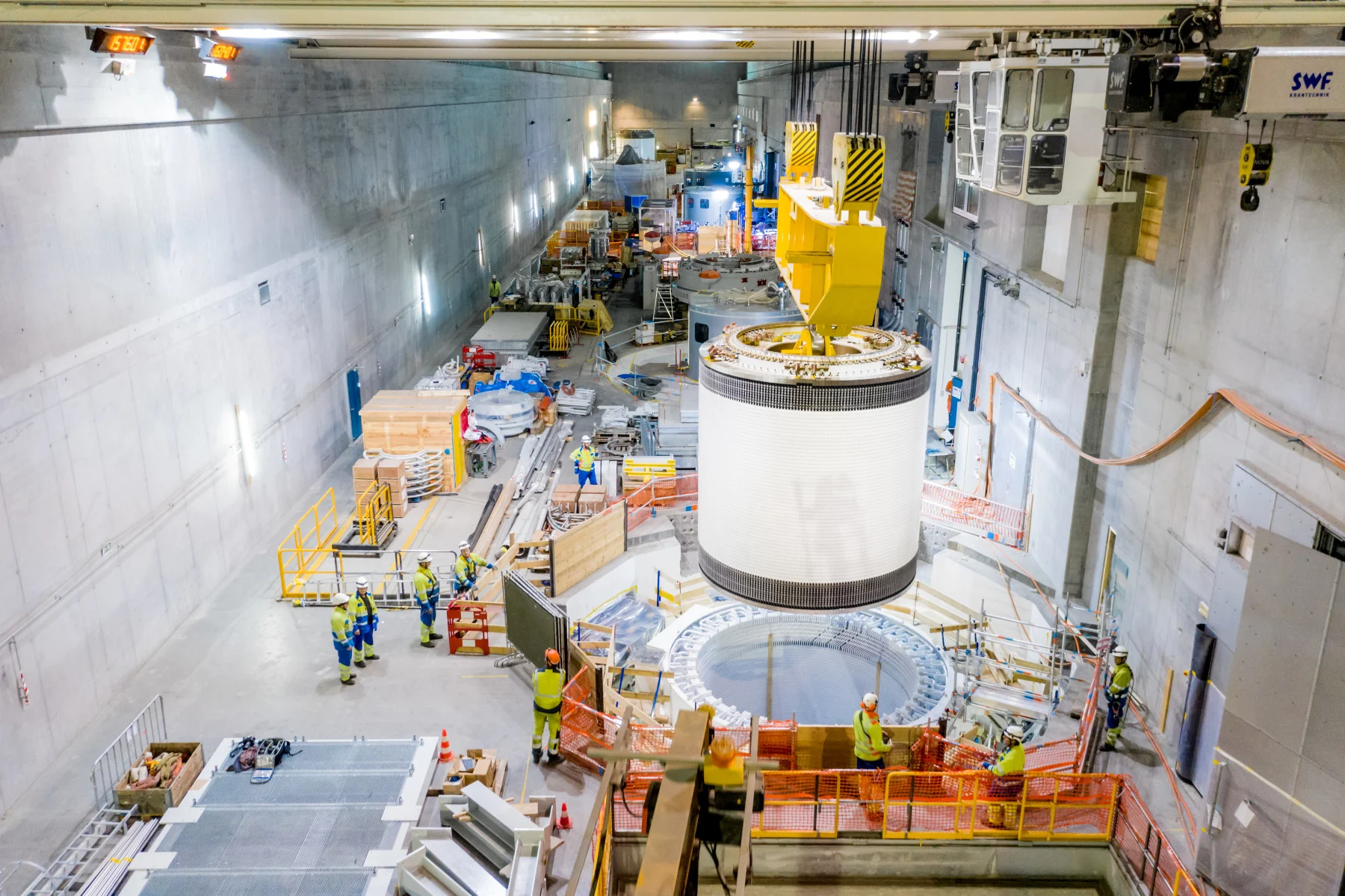
A giant water battery under the Alps generates and stores power, here's how
Nant de Drance can both store and produce tremendous amounts of power, which will improve energy security in Switzerland and other European regions.
After 14 years of construction, a giant water battery named Nant de Drance has begun operations in Switzerland.
The power plant sits between two reservoirs in a cavern that is located 600 metres underground. Nant de Drance powered on in July and is a pumped storage hydropower plant that is capable of both producing and storing energy.
Impressively, the plant can switch from generating or storing energy in less than five minutes.
With each passing second, 360 cubic metres of water flow through six pump turbines that can generate 900 MW of power. The plant can also store up to 20 million kWh, which is equal to the storage capacity of 400,000 electric car batteries.

An aerial view of the Nant de Drance facility nestled in the mountains. (Nant de Drance/ Sébastien Moret)
“With the growth of new renewable energies, such as wind and photovoltaic, whose production is intermittent, the flexibility of a pumped storage power plant like Nant de Drance is necessary to compensate the variations in the electricity grid and to maintain a permanent balance between electricity production and consumption,” the company explained to The Weather Network.
In a press release, the company stated that the facility will have a “key role in the stabilization of the Swiss and European electricity grids” and will improve energy security in Switzerland. The developments come at a time of severe disruptions in the global oil and gas market due to the Russian invasion of Ukraine.

A look inside the pumped storage hydropower plant during the construction phase.. (Nant de Drance/ Sébastien Moret)
To build the facility, 400,000 cubic metres of rock were removed from the cavern and 17 kilometres of tunnels were drilled. Vieux Emosson dam was raised also by 21.5 metres to double the reservoir’s capacity.
Nant de Drance acknowledged that these construction processes had negative impacts on the local environment, notably the wetlands that are home to numerous species. The company has currently invested $22 million Swiss francs in environmental improvement projects, with one focusing on recreating ecosystems that “encourage recolonization of the area by certain rare or endangered animal and plant species in Switzerland.”
See also: 3,400-year-old city emerges in Iraq reservoir during extreme drought
Developing the facility cost approximately $2 billion Swiss francs and was funded through its shareholders Alpiq, SBB, IWB, and FMV.
Watch below: This facility in Iceland could become the largest carbon capture plant on Earth
A “forgotten giant” in the clean energy sector
According to the International Energy Agency (IEA), hydropower generated 4,418 TWh of energy in 2020 – an amount that exceeded more than all other renewable energies combined and was the largest source of electricity.
The IEA states that hydropower is the largest renewable electricity technology by capacity and generation, but significant efforts are needed to expand capacity as the world increasingly leans on carbon-free energy sources.
"Hydropower is the forgotten giant of clean electricity, and it needs to be put squarely back on the energy and climate agenda if countries are serious about meeting their net zero goals,” stated Dr. Fatih Birol, IEA Executive Director.
“Hydropower’s advantages can make it a natural enabler of secure transitions in many countries as they shift to higher and higher shares of solar and wind – provided that hydropower projects are developed in a sustainable and climate-resilient way.”
Thumbnail image: Nant de Drance/ Sébastien Moret












